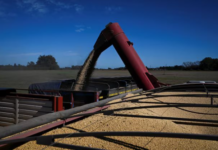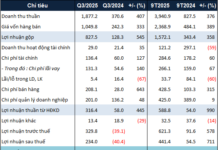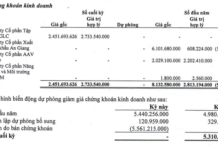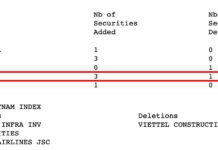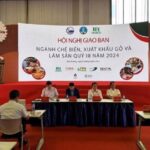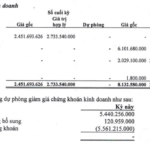As part of his visit to the United States from August 27-28, 2024, Deputy Minister Hoang Trung and the delegation of the Ministry of Agriculture and Rural Development had a working session with Deputy Minister Hafemeister and representatives of relevant agencies of the US Department of Agriculture.
Deputy Minister Hoang Trung’s visit aimed to expedite market access for certain fruits in which Vietnam has a competitive advantage for export; strengthen cooperation between the two ministries in the field of plant protection; and promote technical cooperation and investment in sustainable and low-emission agricultural production.
THE US MARKET ACCOUNTS FOR OVER 21% OF VIETNAM’S AGRICULTURAL EXPORTS
The United States is currently the second-largest market for Vietnam’s agricultural, forestry, and aquatic products, only after China. In the first seven months of 2024, Vietnam’s exports of these products to the US reached 7.23 billion USD, a 21.6% increase compared to the same period last year, accounting for 21.1% of the sector’s total export turnover. Regarding fruit exports, Vietnam currently has eight types of fresh fruit permitted for import into the US, including dragon fruit, mango, lychee, longan, jackfruit, custard apple, grapefruit, and coconut.
During the working session, the two deputy ministers made significant progress in market access for certain fruits from both countries. Specifically, they agreed on technical requirements for Vietnam’s passionfruit and made further progress in the review process for US tangerines.
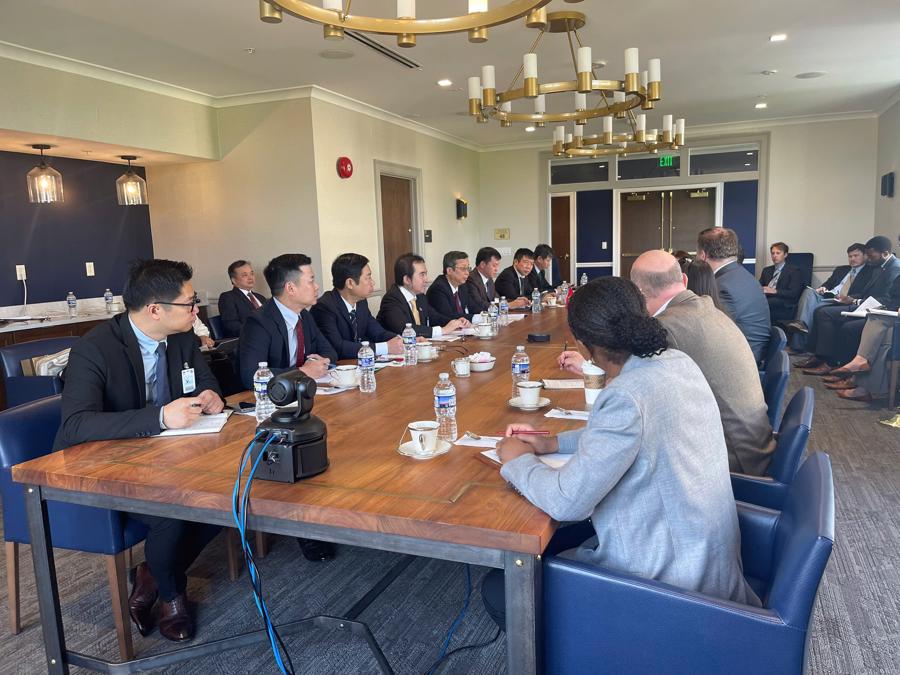
To support the maintenance of growth and market share of Vietnam’s agricultural, forestry, and aquatic products, Deputy Minister Hoang Trung expressed his hope that the US Department of Agriculture would have a suitable voice in the consultation process related to trade remedy cases for these products, particularly regarding wood, warm-water shrimp, and honey. The US side acknowledged the trade role of these products in stabilizing the livelihoods of farmers and the legitimate interests of Vietnamese businesses.
“The United States has never had such a close cooperative relationship with any partner in the Southeast Asian region as with Vietnam. We are committed to further strengthening technical cooperation, enhancing the capacity of the management agencies of both countries in pest control, risk analysis, and research and development, and applying new initiatives and improved crop varieties.”
Mr. Hafemeister, US Deputy Minister of Agriculture
Regarding the application of new measures in the field of quarantine of animals and plants, the two deputy ministers exchanged views in a cooperative and open spirit about the existing legal system. They agreed on the common principle of abiding by international commitments in multilateral trade, of which both sides are members, in accordance with domestic laws while keeping up with new trends in trade, production, and management of animal and plant diseases.
The US side also committed to continuing to support Vietnam in implementing projects in fertilizer management, biological protection drugs, and rice production in the Mekong Delta region.
The two sides also shared views on developing a green and environmentally responsible agricultural production system, joining hands to ensure global food security, and affirming their enhanced cooperation and mutual assistance in implementing global initiatives on smart agriculture, adapting to climate change, and environmental friendliness, especially the “Agriculture Innovation to Respond to Climate Change” (AIM4C) initiative and the Action Alliance “Promoting Sustainable Productivity Growth for Food Security and Resource Conservation” (SPG)
ACHIEVING MANY AGREEMENTS ON FRUIT QUARANTINE
At the working session with the US Animal and Plant Health Inspection Service, Deputy Minister Hoang Trung was informed of the results of the 2024 technical meeting between the two sides. He acknowledged the efforts and highly appreciated the results achieved in improving market access for plant products from both countries through diversifying products and additional pest management measures.
Regarding market access, the two sides agreed to conclude technical discussions and move on to legal procedures to allow the import of Vietnamese passionfruit. They also initiated the review process for new Vietnamese products, including seedless lemons, guava, and jackfruit; agreed on a list of pests and the next steps in the review process for tangerines, plums, yellow lemons, pomegranates, and some other products for use as US crop varieties.
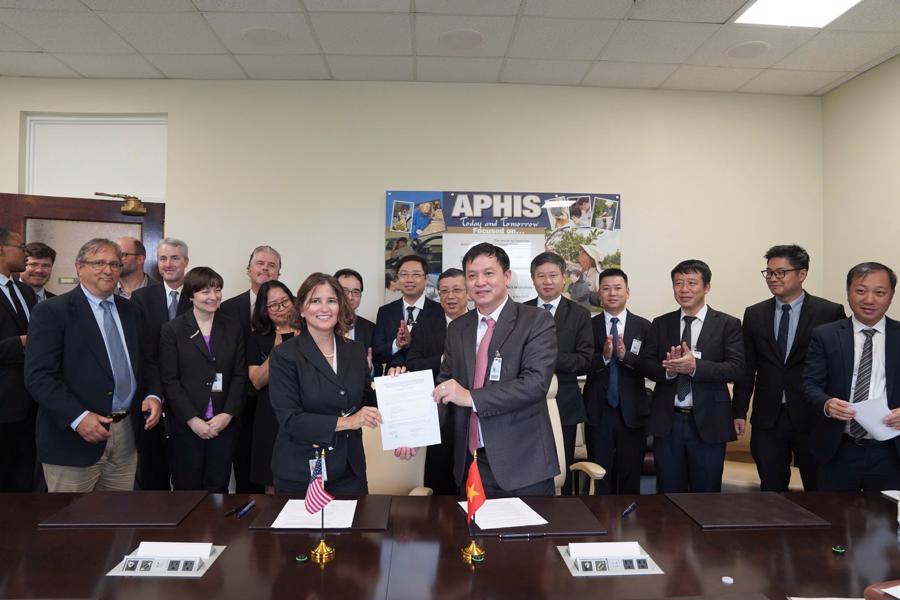
Regarding additional treatment measures and improvements in quarantine procedures, the US side acknowledged Vietnam’s proposals to diversify plant quarantine measures such as hot water treatment, methyl bromide treatment, and cold treatment to reduce costs and facilitate trade between the two countries. They affirmed their continued close coordination and necessary experimental deployment to provide a final opinion. The two sides also agreed to implement a container cargo fumigation measure at the import port. The US also committed to supporting Vietnam in transitioning to using electronic phytosanitary certificates (ePhyto)
The competent authorities of the two countries have reached an agreement on a cooperation framework for the coming time, focusing on capacity building in risk analysis and pest reduction, knowledge sharing, and research results in pest management for plants, as well as digital transformation in quarantine management.
The United States is a crucial market for Vietnam’s agricultural, forestry, and aquatic product exports. In 2023, Vietnam’s exports of these products to the US reached 10.96 billion USD, accounting for 20.7% of the country’s total exports in this sector worldwide.
In the first seven months of 2024, Vietnam’s exports of agricultural, forestry, and aquatic products to the US reached 7.23 billion USD, accounting for 21.1% of the sector’s total export turnover and a 21.6% increase compared to the same period last year. For fruits and vegetables, in the first eight months of 2024, the export turnover was estimated at 4.6 billion USD, a roughly 29% increase compared to the same period in 2023. Among them, fruit and vegetable exports to the US were estimated at 216 million USD, ranking second after China and a 31% increase compared to the previous year.
Women in Action – Dang Huynh Uc My, the Female General of the Vietnamese Agricultural Industry
Representing the outstanding young female leaders of the modern smart agriculture industry, Ms. Uc My has made positive contributions to the national economy by conquering international scientific and commercial arenas.
How can Vietnam’s agriculture become smarter?
With various characteristics such as geographical distance, local labor, and different natural conditions in farming and agriculture in each region, the degree of information technology application in the value chain is uneven, so the agricultural sector is facing many “digital divide” gaps in terms of digitization level…
The Year-End Wood Export Conundrum: Navigating Uncertain Times
In the first seven months of 2024, foreign-invested enterprises (FIEs) exported $3.99 billion worth of wood and wood products, a remarkable 22.3% increase. Meanwhile, domestic enterprises achieved an equally impressive feat, exporting $5.371 billion, a 19.2% surge compared to the same period last year.


